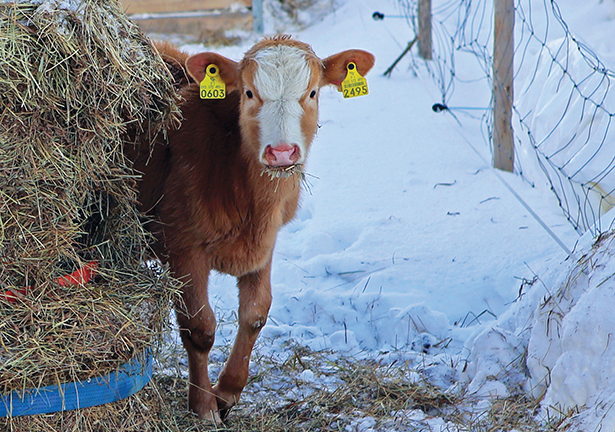“What is your strategy for feeding your cattle herd this winter?”
This is a question worth asking your cattle clients now. What your clients usually do may not work this year.

The winter weather led to substantial losses in alfalfa fields. The spring weather delayed or prevented planting corn and delayed harvesting hay. Many cattle producers will likely be faced with a limited forage supply for the winter of 2019-2020.
If cows come into the spring of 2020 in poor body condition, colostrum quality and quantity—as well as milk production—may be reduced, thus setting the stage for sick or poor-performing calves.
Thin cows will not breed back in a timely manner, so the winter of 2019-2020 could have implications for the calf crop of 2021 also. Now is the time to develop strategies to deal with potential shortfalls in forage inventory.
Two Strategies: Corn Silage, Byproduct Feeds
While the spring weather may have reduced corn yield, that low-yielding field can be a great forage source for a herd of cattle. A field with 100 bushels/acre corn yield will yield about 13 tons/acre of 33 percent dry matter corn silage. Feeding the silage at 65 lb/day as fed (20 lb/day dry matter) will consume approximately 1 T per cow per month, so 1 acre of corn harvested as silage can feed ~12 cows for a month. The corn silage can be stored in a silage bag, so no additional investment in feed storage is necessary. Custom harvesters will likely be in high demand in the fall, so encourage your clients to make phone calls soon if
they want to put up corn silage.
Using byproduct feeds as a non-forage fiber source is another strategy to stretch a limited hay supply. Soy hulls, distillers grains, and corn gluten feed are all sources of digestible fiber that can replace part of the hay in a diet. A useful mix is 1/3 corn, 1/3 soy hulls, and 1/3 corn gluten. On-farm ingredient storage and mixing capabilities will be needed for this approach. Encourage your clients to consult with a nutritionist regarding feeding rates to optimize utilization of the feeds. If changes in feed storage or handling equipment are necessary, now is the time to get organized.
Test Hay’s ‘TDN’
Weather patterns varied significantly across relatively small geographical areas, so hay may be more available in some areas than others. Help make connections between those that have hay to sell and those planning to buy hay. When counseling clients about hay purchases, remind them to ask for a hay test, because not all hay is worth buying. Good quality grass hay will have a total digestible nutrients (TDN) of greater than 50 percent. For simple price comparisons, calculate cost per pound of TDN. Make hay purchases early. Buying late in the year will be expensive.
During the discussion about feed inventory, make a point to inquire about the farm’s mineral feeding. While energy and protein are critical, mineral deficiencies can also have significant effects on the health of a herd. Free choice salt-mineral mix should be available at all times if minerals are not supplied in a mixed feed. Sometimes deficiencies can occur when seemingly adequate mineral supplementation is provided because unrecognized sources of minerals, such as iron and sulfur in water, interfere with absorption.
If there is any question about micromineral status in a herd, consider a trace mineral assay on liver biopsies from a subset of the animals. It only takes 15 mg of liver tissue for the mineral assay, and this can be obtained with two Tru-Cut biopsy samples. Michigan State University and Iowa State University both offer trace mineral assays. Consult with the lab regarding details about handling and shipping.




